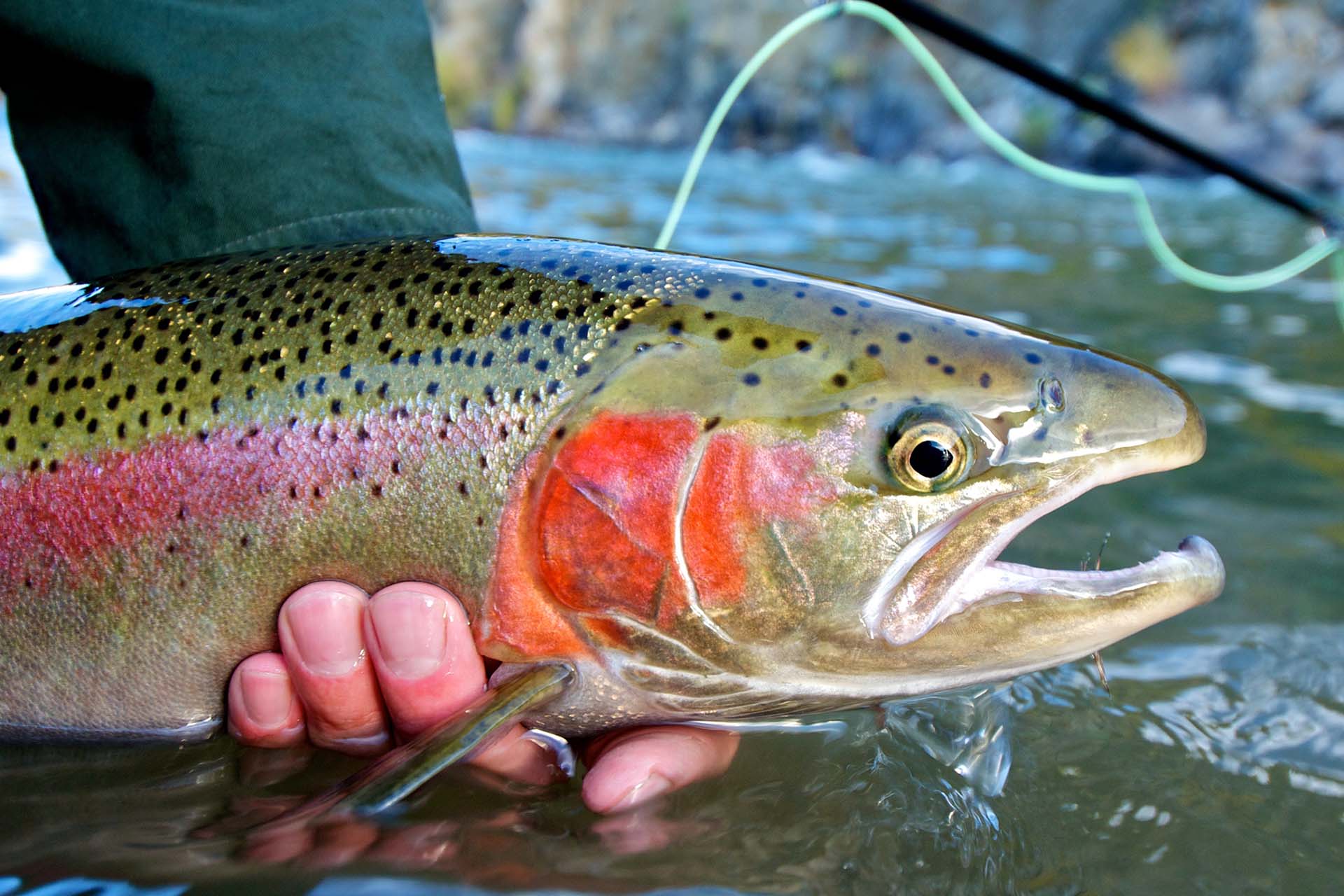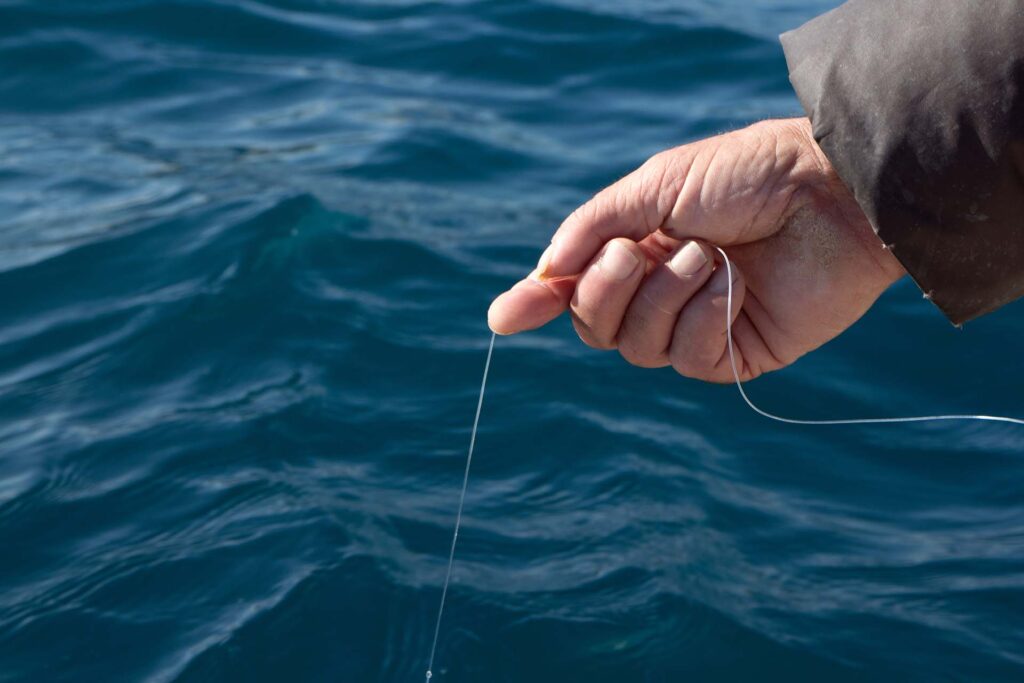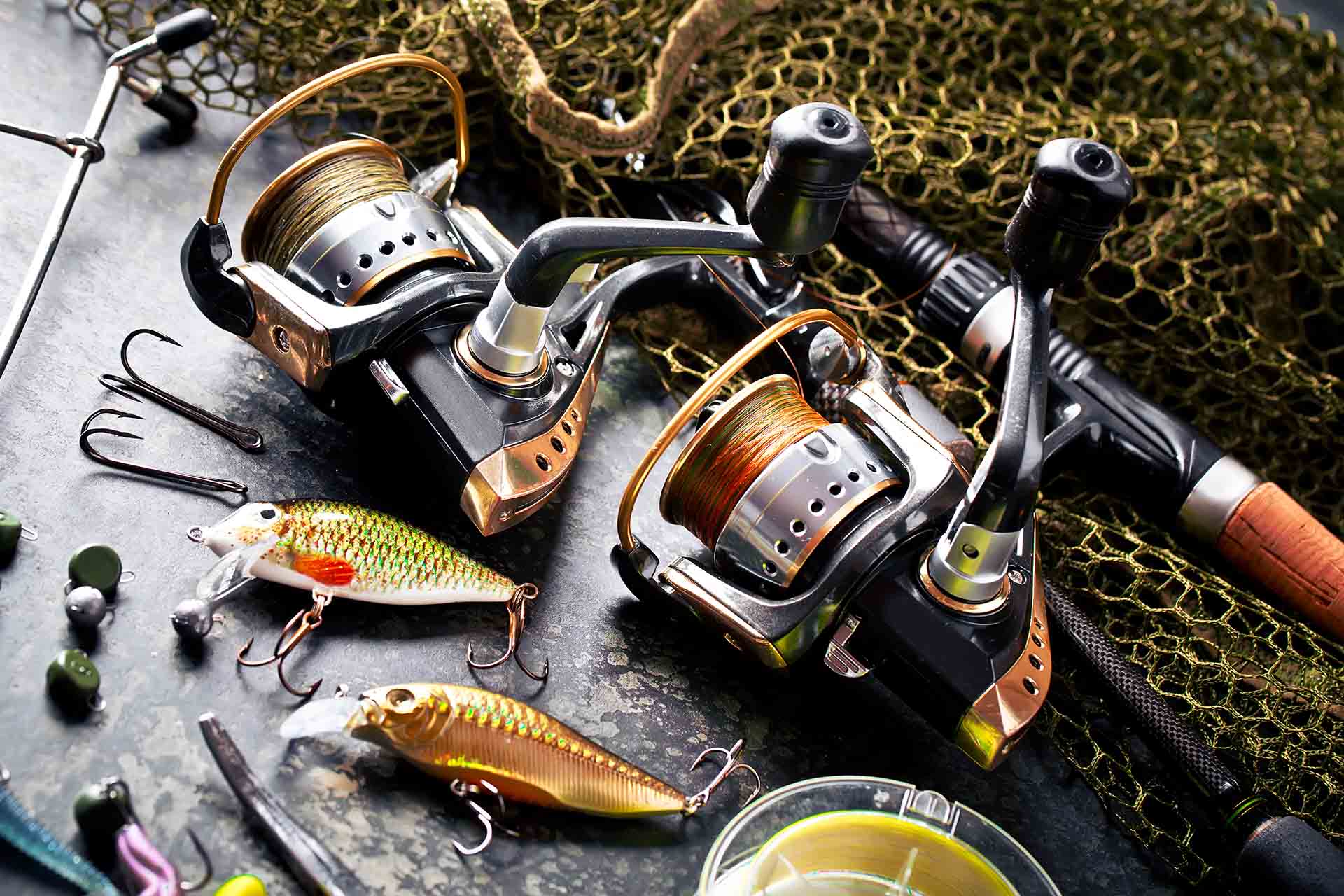Are you wondering which fish is better to go after this season – trout vs. cod? Both of these species can be found in many different bodies of water across the world and offer anglers a unique challenge. But what exactly makes each one so special, and are there any similarities between them? Let’s explore their differences and similarities to give you an idea of which species might be best for your next fishing outing.
These two species are quite different, from their physical appearance and size to their preferred habitat and culinary appeal. That’s mainly because trout is a freshwater species, while cod is a marine fish. This big difference in their preferred habitat brought about differences in feeding habits and activity, so fishing techniques employed to land these impressive beasts are also quite different.
A Comparison of Their Main Characteristics
These impressive species are two of the most common fish to catch around the world for a variety of reasons. They are considered to be some of the most challenging fish to land due to their elusive nature and ability to put up a fight once they get caught on your fish hook, which makes for a unique challenge that can be enjoyed by both beginner anglers and more experienced fishermen.
Before I go into detailed descriptions of these impressive fish, here’s an overview of their size:
| Species | Average Weight | Average Length |
|---|---|---|
| Trout | 2-4 lbs | 12-16 inches |
| Cod | 5-12 lbs | 24-36 inches |
Physical Characteristics of Trout
Trout are a species of fish that can be easily identified by their unique physical characteristics. They have a streamlined body shape with a pointed head and a small, toothy mouth that is well-suited for catching prey in fast-moving water. Their colors vary depending on the species and habitat, but they are often shades of brown or green with specks or spots.
Trout also has a series of small and soft fins called adipose fins that are found on their backs – these fins are unique to the species and are used by scientists to differentiate between different ones. Overall, trout are beautiful and fascinating fish with a variety of physical adaptations that make them perfectly suited for life in freshwater ecosystems.
Physical Characteristics of Cod
Cod has a large, elongated body with a rounded head and a small, pointed mouth that is well-suited for feeding on bottom-dwelling prey. Their colors vary depending on their age and habitat, but they are typically brownish-green with a white underbelly.
Cod also have three dorsal fins and two anal fins, which help them to maintain stability in the water and control their movements. They are known for their large size, with some individuals growing up to 6 feet long and weighing over 200 pounds.
Comparison of the Overall Appearance and Unique Traits
As you can probably gather by now, trout and cod are quite different in terms of overall appearance. Sure, they’re similar in coloring, but the similarities pretty much end there. Trout is much smaller than cod, and they have unique body shapes that set them apart from each other. Despite their differences, both species are fascinating creatures with a variety of unique traits that make them a popular target for anglers around the world.
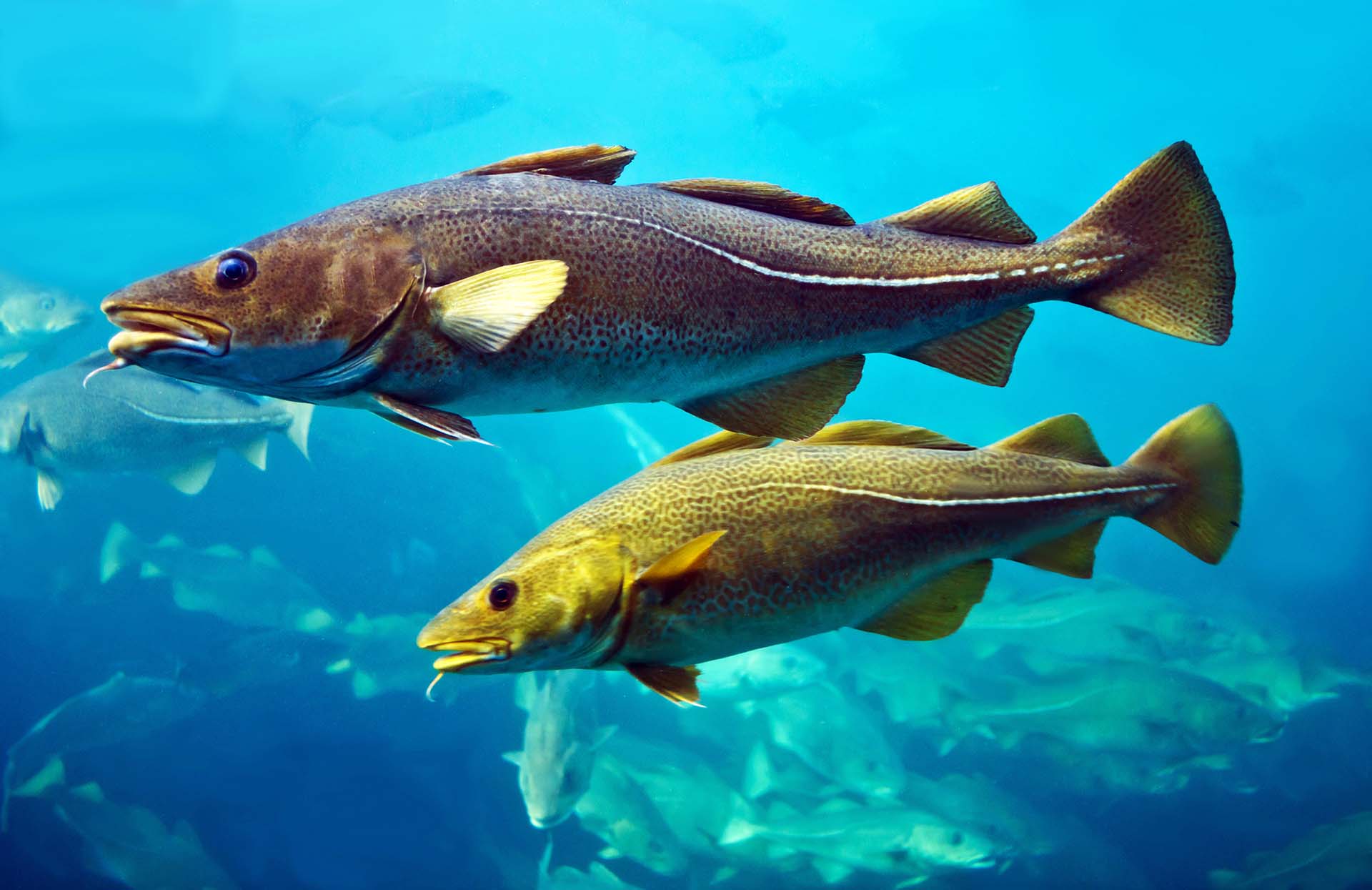
Trout vs. Cod – Habitat and Distribution
Similar to their physical characteristics, there are a lot of differences between these two species in terms of habitat and distribution, but both are highly adaptable fish that have managed to thrive in a range of different habitats and environments.
Here’s an overview of where you can find these fish:
| Species | Preferred Habitat | Location |
|---|---|---|
| Trout | Rivers, streams, and mountain lakes with cool, clear water | North America, Europe, Asia, South America, Africa, Australia, New Zealand |
| Cod | Rocky reefs, sand and mud flats, and deep-sea trenches with cold water | Coastal areas of North Atlantic Ocean, western and eastern Pacific Ocean, the Arctic Ocean, and the Baltic Sea |
Preferred Habitats of Trout
Trout is a common freshwater fish species found in rivers, lakes, and streams throughout the world. They are usually found in cool, clear water with high oxygen levels, and they require a variety of habitats to meet their needs at different stages of their life cycle. Trout also require a variety of cover types, such as undercut banks, overhanging vegetation, and boulder beds, to provide protection from predators and shade from the sun.
Preferred Habitats of Cod
Cod is one of the most common saltwater fish to catch, and this marine species is usually found in the cold waters of the North Atlantic but can also be present in coastal areas and other regions around the world. They typically inhabit cold, nutrient-rich waters with a temperature range of about 0-10℃ and in depths ranging from 300 to 500 feet.
Cod are typically bottom-dwelling fish and prefer habitats such as rocky reefs, sand and mud flats, and deep-sea trenches. They are also known to congregate in large schools, especially during their spawning season in the winter months. Now that you know the spots where you can find these impressive species, let’s take a look at their feeding habits and behavioral patterns.
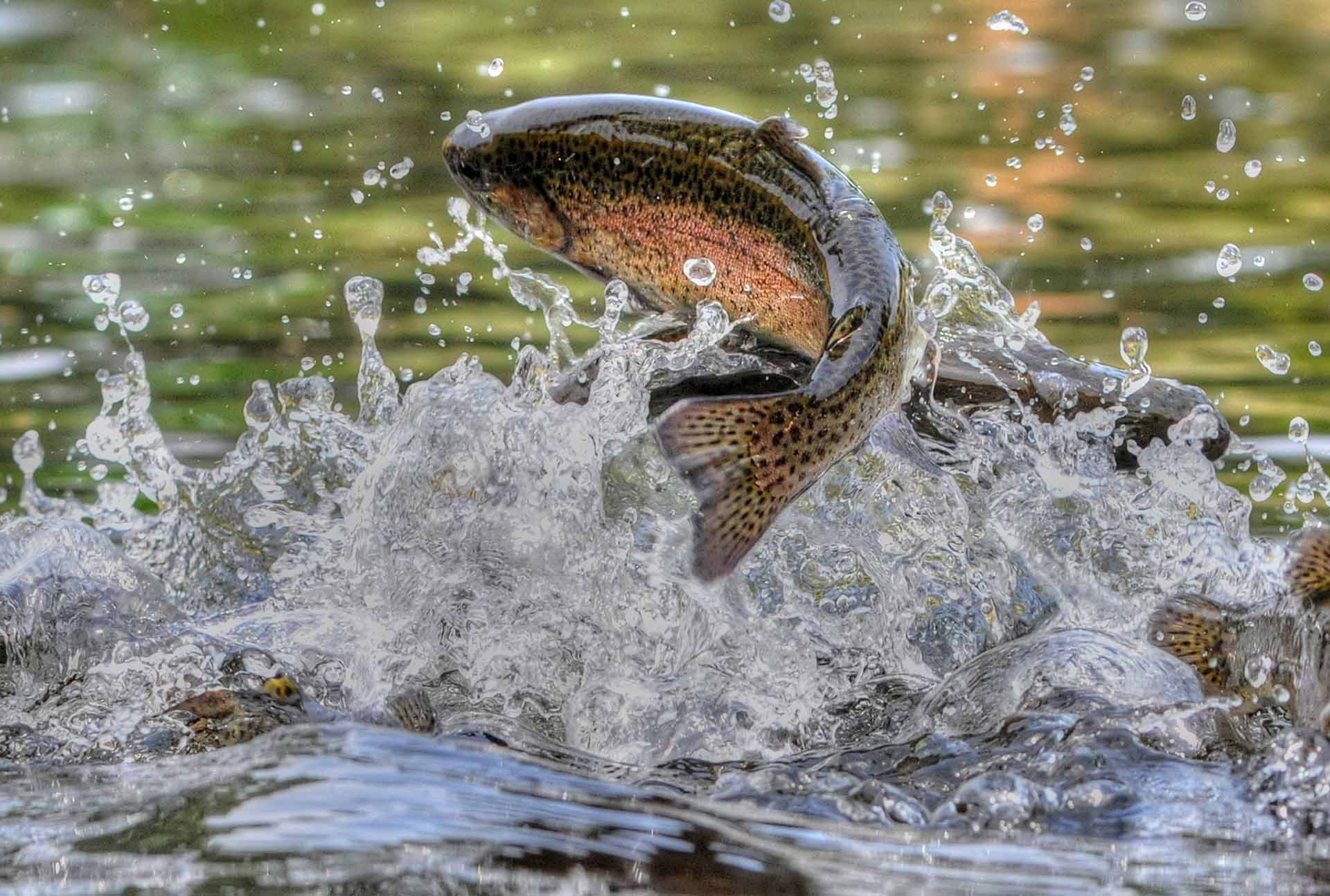
Feeding Habits and Diet
Knowing the feeding habits of a particular fish species is essential for anglers who are targeting them. This knowledge can help you select the most appropriate baits and lures to attract them, which will definitely increase your chances of getting a bite. So, let’s see what these species like to munch on.
Trout Feeding Habits
Trout are a type of fish that have a diverse diet that can vary depending on their habitat and the time of year. Some common prey includes insects, crustaceans, small fish, and other aquatic organisms, but trout are known to be opportunistic feeders, meaning that they will eat whatever prey is the most abundant and readily available in their environment.
Cod Feeding Habits
Like trout, cod are also opportunistic feeders, and their diverse diet most often includes a variety of prey items such as crustaceans, mollusks, and small fish. As already mentioned, this species is a bottom-dwelling fish, and they use their strong swimming ability to forage for food along the ocean floor. Cod is also known for its voracious appetite and can consume up to 10% of its body weight in a single feeding.

Fishing and Recreation
Now that you understand the feeding habits of these species, it’ll be easier to figure out what kind of gear and fishing technique you should employ when targeting them. Using the right technique will not only save you time and effort, as well as increase your chances of landing a catch, but it can also help to minimize the impact on the environment and ensure that fish populations remain healthy for future generations to enjoy.
Equipment for Catching Trout
When it comes to catching trout, the first thing you need is a light or medium-weight spinning rod, as this allows for greater sensitivity and precision when casting, as well as better control over the fish once it’s caught on the fish hook. Bait can vary depending on the species and location, but common choices include worms, artificial flies, and small lures.
Popular Fishing Techniques for Catching Trout
Some popular methods for landing trout include fly fishing, spin fishing, and bait fishing. Fly fishing is probably the most commonly used technique – it involves using a lightweight fly rod and a specially designed artificial fly and tipped line to mimic the movement and appearance of natural insects or other prey.
Spin fishing involves using a spinning rod and fishing reel with a variety of lures or baits, which can be cast and retrieved in lots of ways to entice the fish to strike. On the other hand, bait fishing involves using live or artificial bait such as worms, salmon eggs, or corn, which can be rigged on a hook and cast into the water. This technique is often preferred by beginners or those who want a simpler and more straightforward approach to fishing.
Equipment for Catching Cod
When it comes to catching cod, a sturdy fishing rod and reel combo with a high line capacity is important for reeling in these large fish. A variety of lures can also be effective, including jigs, metal spoons, and soft plastic baits.
It’s also important to have a good depth finder or fish finder to locate schools of cod, as they are often found in deeper waters. Moreover, a landing net and gloves can be useful for safely handling and releasing the catch.
Popular Fishing Techniques for Catching Cod
One popular method for landing cod is jigging, which involves lowering a weighted lure to the bottom and then quickly lifting it up and down to create an enticing motion that attracts the fish. Another commonly used technique is drift fishing, where the boat is allowed to move naturally with the current while drifting baited hooks along the ocean floor. It’s pretty similar to trolling, which is also regularly used to land these impressive sea beasts.
Culinary Uses and Flavor Profiles
Trout and cod are both popular fish that are enjoyed by seafood lovers around the world. In terms of culinary uses, both species can be prepared in a variety of ways, such as baking, frying, grilling, and poaching. However, they are quite different in flavor profiles, so to figure out your favorite, you’ll have to try some of these dishes yourself.
Culinary Appeal of Trout
Trout is known for its delicate and sweet flavor, which pairs well with citrus, herbs, and buttery sauces. It has a slightly flaky texture and a mild taste that makes it a versatile ingredient in many dishes. Here are some popular recipes:
- Grilled trout,
- Smoked trout drip,
- Trout almondine,
- Baked trout with lemon and herbs,
- Trout chowder.
Culinary Appeal of Cod
In comparison, cod has a firmer texture and a more robust flavor, with a mild, slightly sweet taste that can stand up to bold flavors, such as garlic, curry, and tomato-based sauces. Here are some delicious recipes to try out:
- Fish and chips,
- Baked cod with tomato and olives,
- Fish tacos,
- Cod piccata,
- Poached cod with herbs.
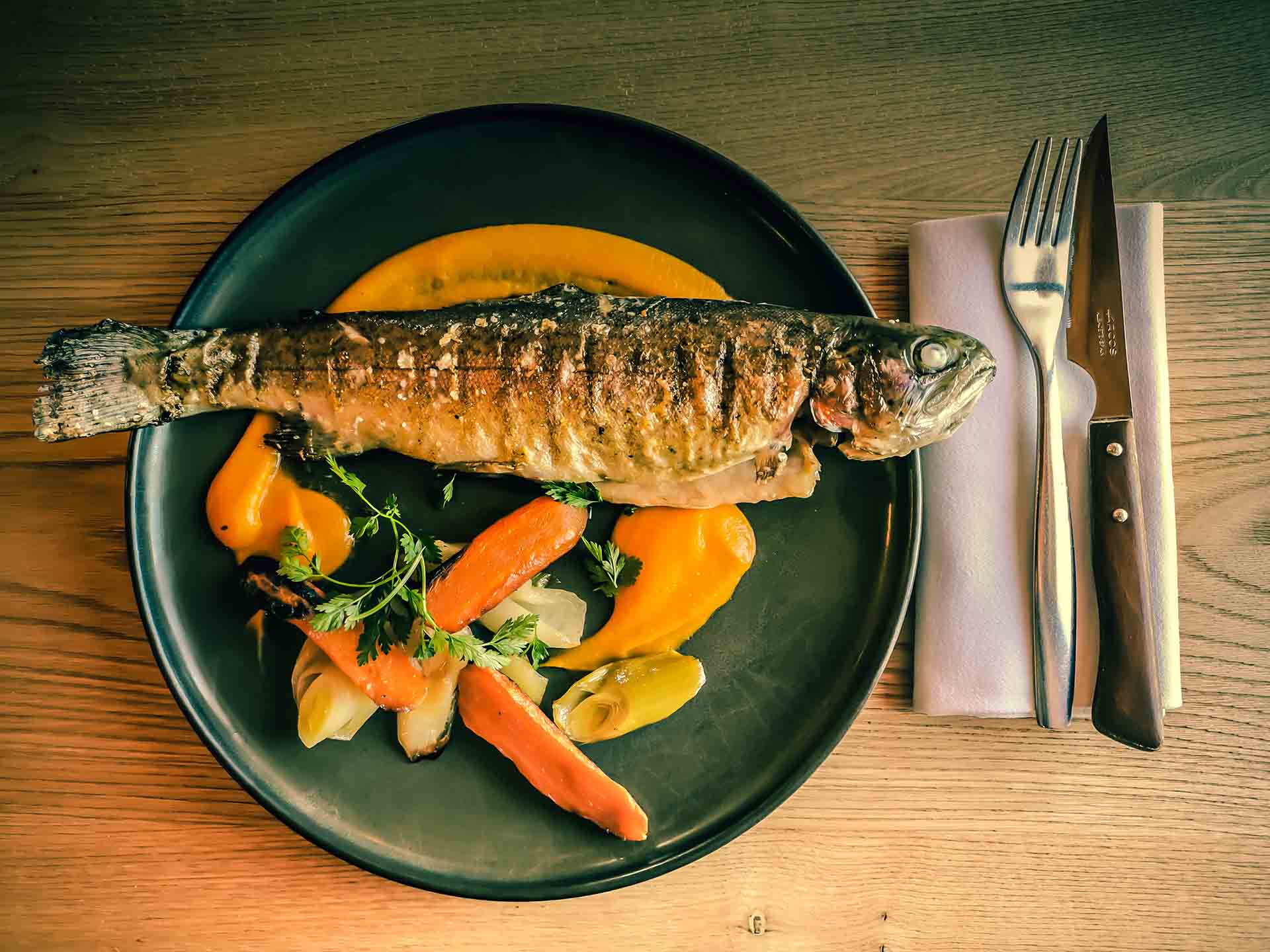
Cod vs. Trout – It’s up to You to Decide Your Favorite
As you now know, trout and cod have some distinct differences between them, and deciding which one is your favorite depends on many different factors. When it comes down to it, it’s all about personal preference when exploring these two species of fish, so go out there and give them both a try. After all, how can you pick just one when you haven’t yet tried them both? Happy fishing!


